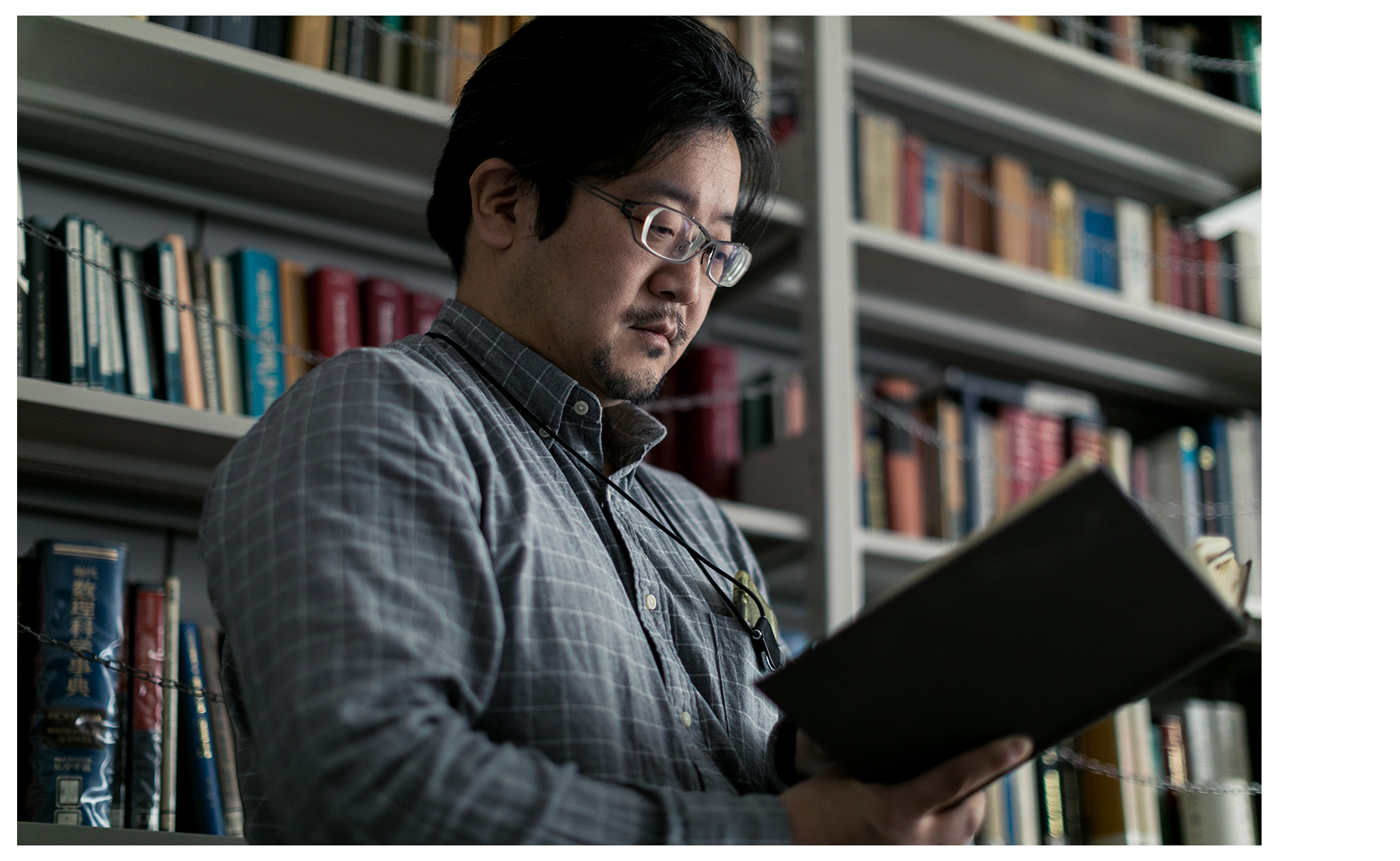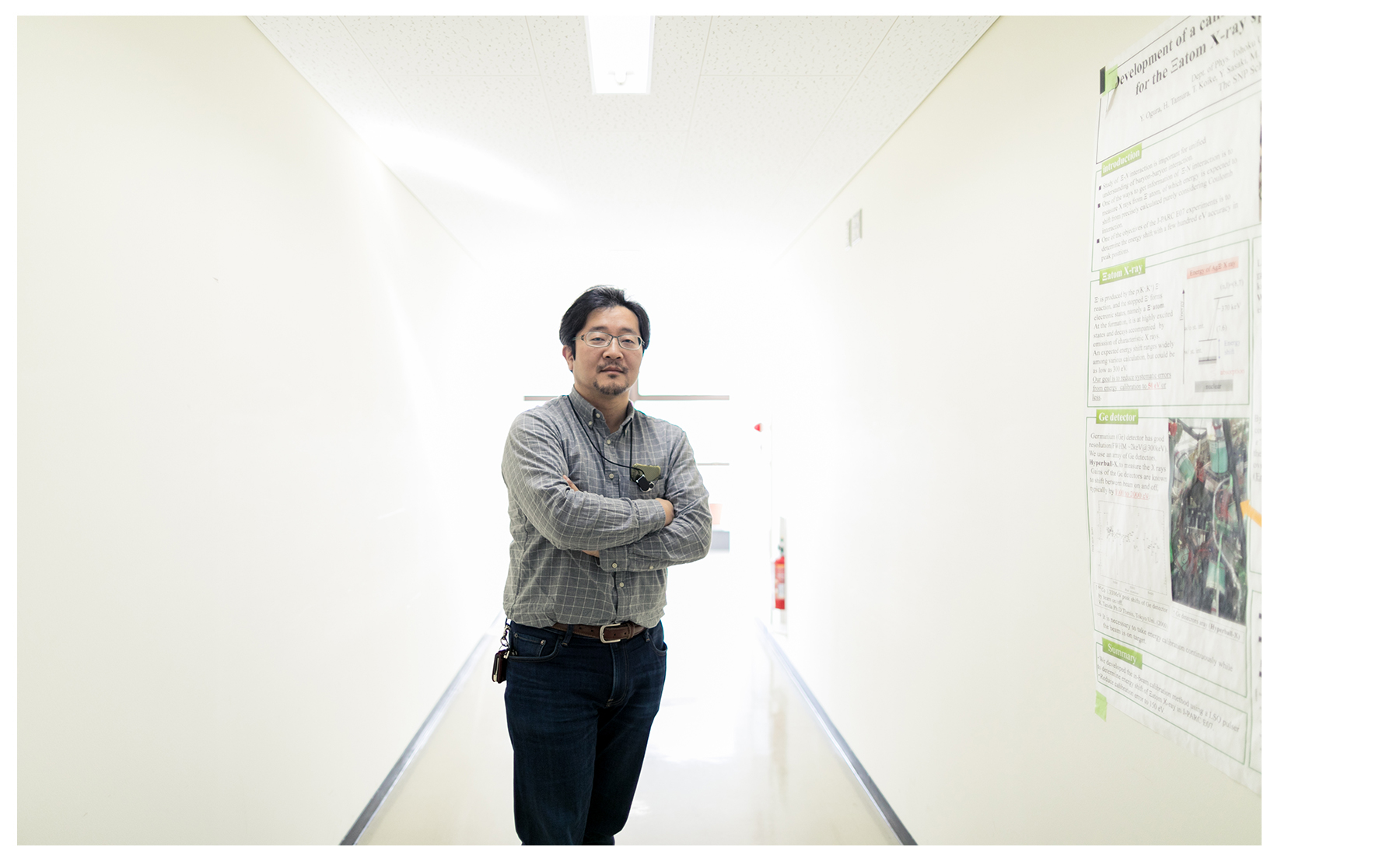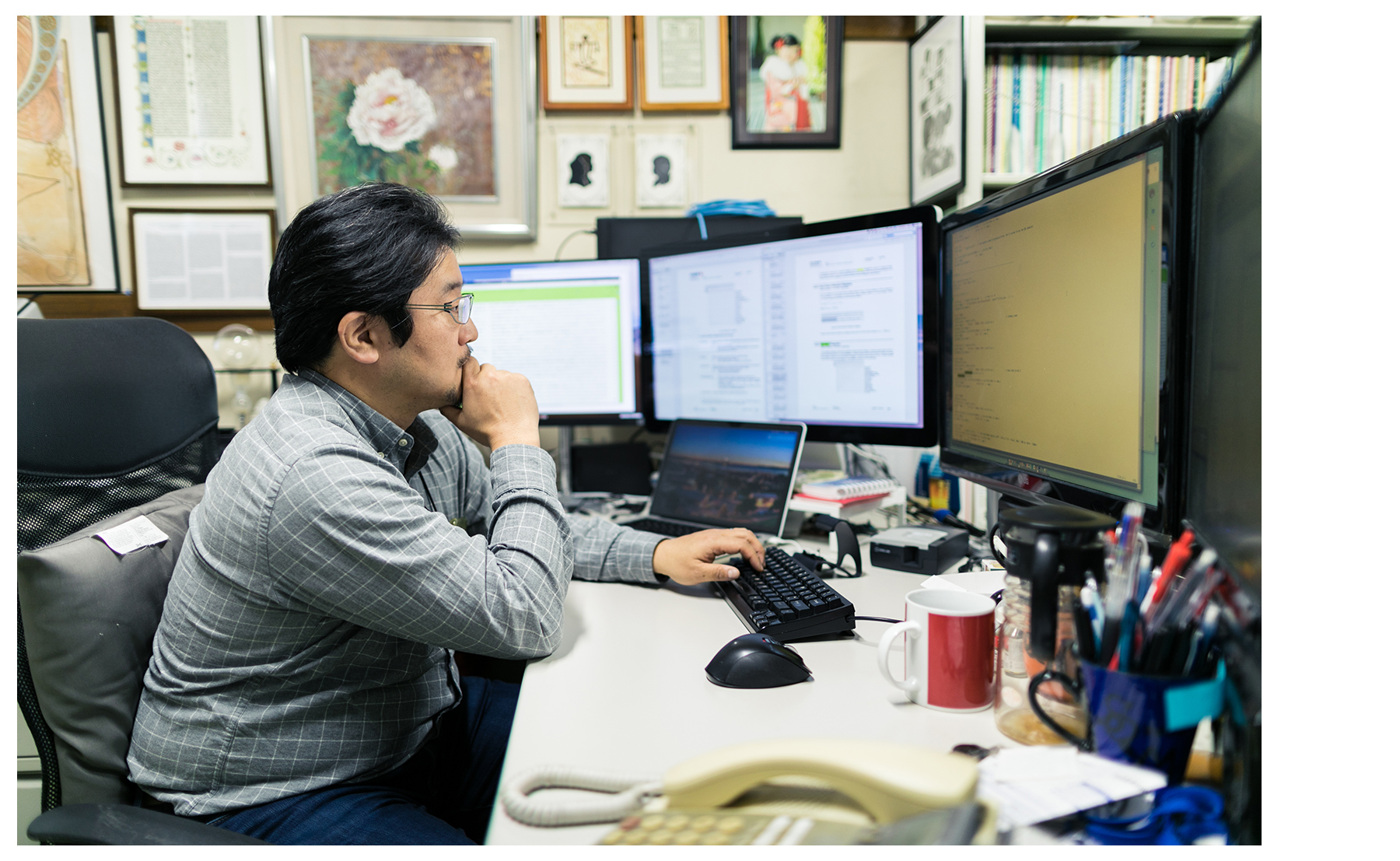The protons and neutrons that make up the nucleus are made up of elementary particles named “up quark” and “down quark”, but there are six types of quarks in all. The protons and neutrons made of 3 quarks. The particle made of 3 quarks are called baryon. Baryons which include the strange quarks are called hyperon. We are preparing to conduct experiments to measure the force acting between Λ particles (one of hyperons) and neutrons, and are developing detectors necessary for that purpose.
Hyperons can be made on the earth by using an accelerator, but their average lifetime is about 260 ps (picoseconds: 10 -12 seconds). You might feel what do you do with making such short particles? But there is a neutron star in the universe where this hyperon is thought to exist stably. Neutron stars are very dense materials left after a supernova explosion. Recently, a neutron star with different size and density from the previous prediction has been discovered, which is one of problems in astrophysics.
An important factor in considering the density and size of neutron stars is the force acting among hyperons, protons, and neutrons (baryon forces including strangeness). Until now, baryon forces have been studied mainly by creating nuclei called hypernuclei in which Λ particles are bound to nuclei and measuring their mass precisely. The direct measurement of those interaction is a scattering experiment of Λ and proton (p), Λ and neutron (n), but that kind of experiment is difficult.
For Λ and proton scattering, there are some experimental data in the 1970s, but there is nothing about Λ-neutron. The force between Λ and neutron is expected by considering that protons and neutrons are the same particle, so that properties of the same kind of particles are only slightly different.
The physicists thought that we could understand the baryon force because the mass of various hypernuclei could be explained well by several theoretical models commonly. Recently, however, the masses of two hypernuclei 4 Λ H (configuration is pnnΛ) and 4 Λ He (configuration is ppnΛ) were precisely measured, and the theoretical model could not explain the mass difference.
In order to conclude whether the forces acting between Λ and proton, Λ and neutron are wrong in the theoretical model, or because of other effects, it is necessary to have proof of evidence experimentally. For this purpose, I am planning an experiment to measure the Λ-neutron force obtained from the strangeness photo-production of γd → K+Λn using a γ-ray beam and a liquid deuterium target at the Electron Photon Research Center at Tohoku University.
I joined the current research field only after I got the current position in Tohoku University.
In the past, I wanted to become a high school physics teacher. I entered Faculty of Education, Hiroshima University. At that time, the Faculty had a policy of specializing in subjects such as the Faculty of Science and the Faculty of Literature. Therefore, I took physics subjects like physics students. I came to want to become a physics researcher while receiving a specialized subject, and entered the Department of Physics, Graduate School of Science, Hiroshima University.
The research I was doing in the lab was an experiment to search for the state of Quark Gluon Plasma (QGP) that was thought to exist in the early universe by accelerating heavy ions to near the speed of light and colliding with the target. This is an experiment using the accelerator SPS at CERN, which crosses the French border near Geneva, Switzerland.
After earning my PhD, I participated as a postdoctoral researcher in QGP research experiments using an accelerator called RHIC at Brookhaven National Laboratory in the United States. I moved two positions using the same accelerator, first at the STAR experiment group as a researcher at Lawrence Berkeley Lab. And then at the PHENIX experiment as a researcher at the RIKEN-BNL Research Center.
In high-energy heavy ion collision experiments, various particles are generated. There are many different types of QGP signals that can be analyzed at the same time. There was a particle containing strange quarks that I was interested in at that time. A few months before the second postdoctoral fellowship expired, there was an open call for positions at Tohoku University. Although it is the same field in terms of nuclear physics, I have never collaborated people in Tohoku University. I applied the position and described a connection between QGP and Hypernuclear physics over strange quark. My application was adopted.
In my case, there is a physics, but what I wanted to do in my undergraduate, graduate student, post-doctoral era, and what I am doing, have changed. If you are reading this text, you may be a high school or undergraduate student who is worried about your future career. What you want to do after entering university may change. Changing on the way is nothing wrong.
At least in the elementary particle / nuclear experiment field, it is normal to move from university to graduate school, moving to another field, another university, or another laboratory. Looking at rumors on the net, there seems to be a field where there are professors who didn't allowed to move to other graduate schools. But if you are away from those who say such things, it will make your life more meaningful, I think.
Many research results conducted at the Department of Physics, Faculty of Science and Graduate School of Science may not be directly useful to the world. However, GPS-based location information that is also used in smartphones is not possible without the theory of relativity. Obviously Einstein never think of the theory of relativity in an attempt to be useful for GPS. Applications cannot be born without research in a wide range of fundamental research.
Some people have the question, like “is it useful for employment?“ I believe that universities are not for employment, but for the life after graduation, you need to think about working for some kind of job.
The things you learn in physics research include the way you study: habits that go back to fundamental principles and logical thinking. In addition, knowledge and skills necessary for research include knowledge of machining and electronic circuits. Programming skills for data analysis are also essential, but you will gain an understanding of the algorithm how to program mathematical procedures rather than just being able to use a particular language. In nuclear physics experiments, we will conduct research by creating experimental groups (collaborations) with people from various universities, research institutes, countries, and regions, not just one university. Even graduate students usually play responsible roles. In collaboration, working with many people is the same as the ability required to work at a company. For this reason, undergraduate / graduate students can find employment in various companies that are not related to research. Recently, more and more people have found employment after obtaining a doctor's degree.
If you are interested in the Department of Physics, but you are hesitant to go on to study as a researcher, please do not worry and proceed in the direction of your interest. Surely, your world should expand.





